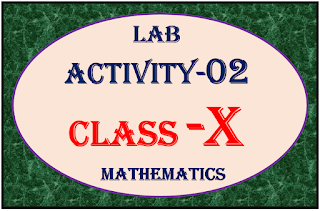Featured Posts on Lesson Plan
Mathematics Lab Activity-21 Class XI
- Get link
- X
- Other Apps
Mathematics Lab Activity-21 Class XI
Chapter - 16 probability
Activity - 21
Objective
To write the sample space, when a dice is rolled once, twice, thrice....
Material Required
A die, plastic discs marked with
1, 2, 3, 4, 5, 6, paper pencil/pen etc.
Theory
If E is an event then :- P(E) + P(notE) = 1
Probability of an event is greater than, equal to 0 but is less than, equal to 1. This is also be called as the range of Probability
Impossible Event:-
An event which never occur is called impossible event.
P(Impossible Event) = 0
Sure Event :
An even which happens for sure is called sure event. Sure event is also be called as the certain event.
P(Sure Event or Certain Event) = 1
Equally likely events:-
If every event of the sample space has equal possibility to happen, then the events are called equally likely events. (e.g. Tossing a coin)
1) Throw a dice once. The number on its top will be 1, 2, 3, 4, 5, 6.
2. Make a tree diagram showing its six branches with numbers 1, 2, 3, 4, 5, or 6 as shown in fig. 20.1
Fig. 20.1
3.) Write the sample space of these
outcomes.
4) Throw a die twice. It can fall in
any of the 36 ways as shown in figure 20.2 by the tree diagram.
5) Repeat the experiment by throwing the die 3 times, 4 times and so on… and write the sample space of the outcomes in each time.
Observations
1) If a die is thrown once, then
the sample space is :
S = {1,
2, 3, 4, 5, 6}.
Number of elements in S = 6 = 61
2) If a die is thrown twice, the
sample space is :
Number of elements is S = 36 = 62.
3.) If the die is thrown twice, then the number of elements in the sample space will be = 63 = 216 and so on.
Result
If a die is thrown once then
number of elements in the sample space is = 61.
If a die is thrown twice then
number of elements in the sample space is = 62.
If a die is thrown thrice then
number of elements in the sample space is = 63.
If a die is thrown 4 times then
number of elements in the sample space is = 64.
………… and so on.
- Get link
- X
- Other Apps







Comments
Post a Comment